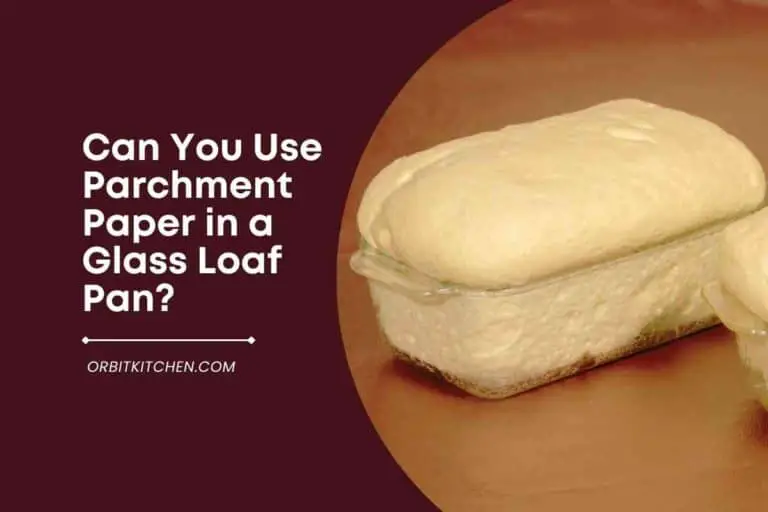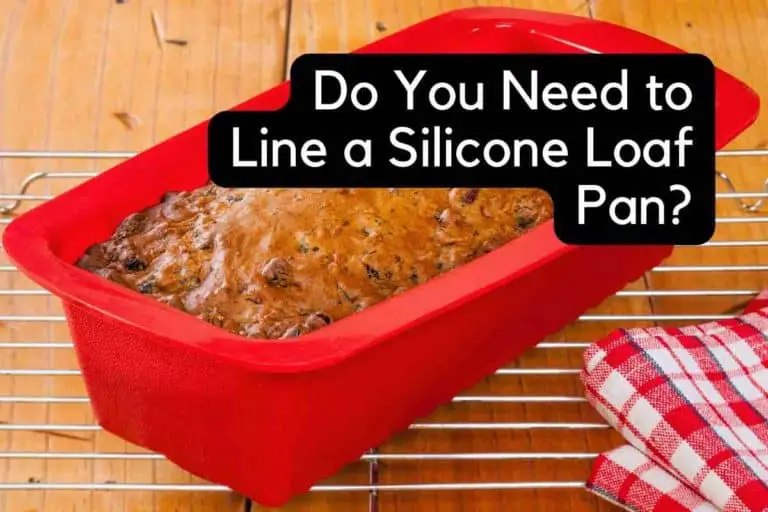Ultimate Guide to Baking Cookies
This post is about the basics of baking cookies and how to make them as delicious as they are healthy. It’s a guide to making cookies that are great for you and your family.
Making cookies is a tradition in many families. While some people enjoy the process of baking, others simply can’t get past the mess and the cleanup. The good news is that it doesn’t have to be that way.
The best part of baking cookies is the smell of fresh baked goods wafting through the house. The problem is that the ingredients can be a little intimidating. Many of the ingredients in baking cookies are not necessarily healthy for you, so it’s important to know what to look for when buying your ingredients.
The majority of people prefer buying pre-made cookies over baking their own. But when it comes to making cookies, there are many things to consider. In this post, we’ll walk you through the basics of making cookies and related questions.

Baking Cookies
Baking cookies is a fun and delicious way to show your love for someone. Whether baking for a special occasion or just because cookies are always a welcome treat. There are so many different kinds of cookies to choose from, so you’re sure to find the perfect recipe for any occasion.
Should You Bake Cookies Directly on the Baking Tray?
No, you should not bake cookies directly on the baking tray. The cookies will stick to the tray and be challenging to remove. Using a cookie sheet or lining the baking tray with parchment paper is better.
Baking paper is an absolute necessity for cooking cookies so that your baked goods don’t stick and burn to the surface of your pan. If you’re planning on baking some cookies, follow these tips:
How Can You Make Cookies Chewier?
If you love chewy cookies, there are several things you can try.
- The first thing to do is add more sugar and less flour. This will help the cookies spread when they bake.
- You can also try adding more butter and an extra egg yolk to help bind the ingredients together. The more moisture, the chewier the cookie!
- When baking the cookies, use a lower temperature for a shorter time. Also, use a wider pan to help spread out the dough so that it will cook faster.
- Another tip is to add more baking powder (which helps things rise in baked goods). You can also add more vanilla extract for added sweetness—or even some chocolate chips!
How Many Cookies Fit on a Cookie Sheet?
A cookie sheet is a flat, rectangular baking pan typically used to bake cookies. The cookie sheet size varies, but most are about 18 inches by 13 inches. The number of cookies that will fit on a cookie sheet depends on the size of the cookies. For example, if the cookies are two inches in diameter, then about 36 cookies will fit on the cookie sheet.
If you use a standard-size cookie sheet, usually between 13 by 9 inches and 16 by 11 inches, you can quickly figure out how many cookies you can make at once if you use a standard-size cookie cutter.
If your dough is rolled to 1/4 inch thick and your cookie cutter is 3 inches in diameter, then each circle will take up 9 square inches of space on the baking sheet. You’ll be able to fit about 24 circles on each baking sheet.
Can You Bake Cookies On Aluminum Foil?
You can conveniently bake cookies on aluminum foil, as the aluminum foil conducts heat, it will bake crispy and soft cookies while reducing baking time. Always grease aluminum foil nicely before baking cookies to avoid sticking. However, if you do not reduce cooking time and temperature, the cookies will be overcooked or burned. In addition, you will dump it after baking, so it cuts back clean-up time.
Should You Flatten Cookies Before Baking?
Flattening your cookies before baking helps ensure they will bake evenly and not puff up in the oven. It also helps keep their shape so they look neat and uniform once they come out of the oven.
The best way to flatten cookies is with a rolling pin, but you can also use your hands if you don’t have one available at home. If using your hands, try not to let your fingers touch each other as this may cause some dough tearing due to uneven pressure points on either side of where they touch (which leads us to our next point).
Cookies can be a bit fickle when it comes to baking. Many things can go wrong in the oven. Some cookies turn out too dark or soft on the inside, while others are too crunchy or just don’t have enough flavor. One way to help avoid these problems is by flattening your cookies before baking them.
Can You Re-bake Cookies to Make Them Crispy?
Yes, you can re-bake cookies to make them crispy. All you need to do is put them back in the oven for a few minutes. This will help reactivate the baking process and make the cookies crispy.
Also, there are several ways to go about achieving a crunchier cookie. You can bake them at a lower temperature for a longer time, which heats the sugar and butter until it browns.
This caramelizing process gives them a slightly crispy, chewy texture. You can also increase the sugar-to-flour ratio in your recipe.
Read Also: Can You Bake Cookies in an Air Fryer?
How Do You Make Cookies Crispy Again?
You’re not the only one who must suffer through stale, soft cookies. Fortunately, there are ways to make them crispy again!
- One easy way is to put them in a hot oven for a few minutes. If you made the cookies with butter or eggs, check on them frequently or they could burn or become hard.
- Another way is to microwave your cookies for about 30 seconds. This will dry out their moisture and crisp up the edges.
- A third method I’ve heard works well from others is using a toaster oven at about 350 degrees for about five minutes or so.
How Do You Know If Cookies Are Underbaked?
If a cookie is underbaked, it will be soft and may not be cooked through. To check if a cookie is underbaked, insert a toothpick into the center of the cookie. If the toothpick comes out clean, the cookie is done. If the toothpick comes out with batter or dough, the cookie is underbaked.
Some soft-baked recipes call for removing the cookies from the oven when all of them have spread into one another or before they’ve turned any sort of color.
If that’s the case, you should test them a few minutes before the recipe recommends to ensure you get them out in time and don’t end up with crunchy disks.
Can Cookies Be Slightly Undercooked?
Cookies are typically cooked until golden brown, but some people like them slightly undercooked, so they are still soft. If your cookies are baked with a cracked surface, you will probably find that the middle of the cookie is not entirely done.
This is because as the outer edges of the cookie bake, they eventually start to shrink away from the center. The resulting gap creates an air pocket that can be raw and doughy. You can fix this problem by ensuring your dough is evenly portioned into flattened balls before baking.
Another problem some people experience is that their cookies have a sunken center after coming out of the oven. This happens when you use too much flour in preparing the dough or when too many ingredients are added to each cookie (like nuts or chocolate chips).
Storing Cookies
Baked cookies are best stored in an airtight container. If you are keeping them for a short period, you can place them in a cookie jar or Tupperware container. If you are looking to store them for a longer time, you can put them in a freezer bag store them in the freezer.
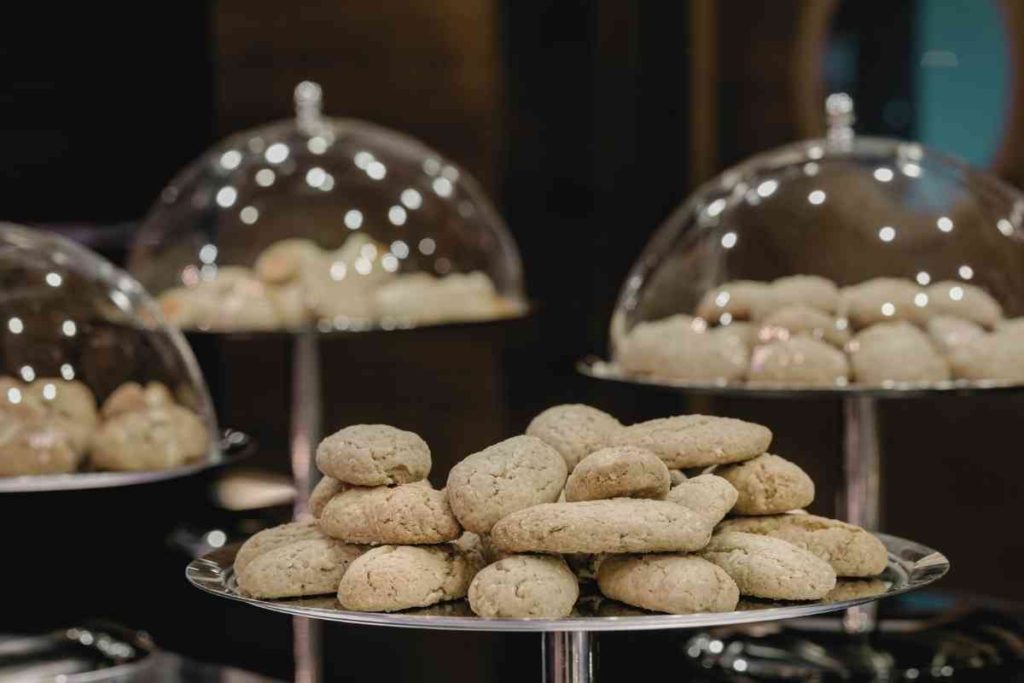
How Long Do Homemade Cookies Last in a Container?
In a sealed container, homemade cookies will keep for up to one week. If you are storing soft cookies in a jar, place plastic wrap between the layers of cookies to prevent them from sticking together. At room temperature, you can store baked chocolate chip cookie dough in an airtight container for up to two months before baking and eating.
How Long Do Cookies Last in a Sealed Cookie Jar?
When stored in a cookie jar, cookies will last for 6-8 months if homemade and 4-8 months if they are store-bought. Cookies can last much longer when frozen or refrigerated. The shelf life of cookies depends on various factors, such as the sell-by date, the preparation method, and how the cookies were stored.
Cookies are best stored in an airtight container like a cookie jar to keep them fresh for as long as possible. You should cool cookies completely before placing them in the cookie jar so that condensation does not form inside your storage container.
If you store warm cookies in an airtight container or plastic bag, moisture can build up inside, which will cause the cookies to go soft and possibly moldy.
Can You Refrigerate Cookies After Baking?
Yes, you can refrigerate cookies after baking. There are a few things to keep in mind when doing so, however. Refrigerated cookies will last longer than those that are not. Refrigerated cookies may become more challenging and less fresh-tasting over time. If you plan to freeze cookies, it is best to do so before refrigerating them.
If you’re looking for soft cookies, storing them in an airtight container with a slice of bread is a classic approach that works like magic to keep them moist and chewy. You can also use this method if you don’t plan on eating all your cookies immediately—just make sure to take the bread out when you want to eat them!
Can You Leave Cookies out Overnight to Cool?
While it is safe to leave cookies out overnight at room temperature to cool, if the temperature is high, it’s best to err on the side of caution and store them in an airtight container in the fridge.
Cookies are best enjoyed fresh out of the oven, but sometimes you need to let them cool before eating them. If you’re in a hurry, you can put them in the fridge or freezer to speed up the process, but if you’re patient, you can just let them sit out on the counter overnight.
Why Do My Cookies Stick to Parchment Paper?
You may experience cookies sticking to parchment paper if the baking sheet is too hot or if the cookies were dropped onto the parchment paper while they were still a bit warm. Greasing the baking sheet with a light layer of butter and/or flour or lining it with new parchment paper are good ways to prevent sticking.
Does a Cookie Jar Keep Cookies Fresh?
A cookie jar is a great way to keep cookies fresh at room temperature, but if you plan to hold on to those cookies for longer than a week, you should probably consider other options. As mentioned earlier in this article, bacteria and molds are the main culprits in deteriorating food quality quickly.
Since they’re just going to keep multiplying day after day, even sealed cookie jars aren’t going to slow down the process forever. Once you open the pot again, they will have access to air and can start multiplying again even faster with that opportunity. If you want your treats to last longer than a week, consider freezing them.
How Long Can You Keep Cookie Sheets in the Fridge?
You can keep cookie sheets in the fridge for up to 5 days, but you should store them properly in an airtight container. Cookie sheets may stick to the refrigerator if they’re exposed to too much humidity or if they’re not stored properly.
How Long Do Cookies Last at Room Temperature?
Cookies last for about two to three weeks at room temperature if stored in an airtight container. If you want them to last longer, you can keep them in the fridge, which will last for about three to four months.
How Long Do Chocolate Chip Cookies Last at Room Temperature?
After baking and properly storing chocolate chip cookies, they should last for about 2 to 3 months at average room temperature. To extend the shelf life of homemade chocolate chip cookies (without nuts), store them in an airtight container; or, if you prefer, place in a heavy-duty freezer bag and seal them tightly.
How Long Do Sugar Cookies Last at Room Temperature?
If they are in an airtight container, they can last for weeks. However, if they are left out in the open, they will only last for 4-5 days at room temperature. The best way to tell if sugar cookies have gone bad is to check and see if they smell off or taste stale. You can also tell by looking at them—if they are discolored or moldy, do not eat them.
To maximize the shelf life of sugar cookies, store them in a cool, dry area; after baking, place them in an airtight container or heavy-duty plastic bag. Cookies can also be wrapped in aluminum foil or plastic wrap, placed inside a freezer bag, and frozen for up to 6 months with good results (many sources say “6 months,” but I’m going on personal experience here).
How Long Do Sugar Cookies Last in the Fridge?
Sugar cookies can last for 2 to 3 weeks in the fridge if stored in an airtight container. A sugar cookie is a type of cookie that is commonly made with flour, sugar, butter, eggs, and vanilla extract. They are often decorated with icing, sprinkles, or other toppings.
How Long Do Sugar Cookies Last in the Freezer?
Sugar cookies can last in the freezer for up to six months. This is a great way to enjoy them all year-round without having to make a fresh batch every time you want one. Simply take them out of the freezer and enjoy. Sugar cookies are a popular dessert that you can enjoy year-round. While they are typically associated with Christmas, you can enjoy them any time of the year.
To freeze sugar cookies, wrap the first layer in plastic wrap. Then add another layer of plastic wrap over that. This ensures that your sugar cookies stay fresh-tasting and moist while in the freezer. Place your wrapped sugar cookie layers into an airtight container, such as a Tupperware container or a gallon-size zip-top bag.
How Long Do Sugar Cookies Last with Royal Icing?
When stored correctly, iced sugar cookies can last as long as:
- 2 Days at room temperature.
- 2–3 Weeks in the refrigerator.
- Up to 6 Months in the freezer.
Do Frozen Sugar Cookies Go Bad?
You can safely keep sugar cookies in the freezer for up to six months if stored properly. To make sure you’ve prepared them correctly, start by wrapping each cookie individually in plastic wrap.
Next, put all the wrapped cookies in an airtight container or baggie and store them in your freezer. Then, when you want to take a cookie out of the freezer, it’s essential to let it thaw completely before eating it.
How Long Do Christmas Cookies Keep?
Christmas cookies will usually stay fresh for about 1-2 months past the date stamped on the package. To keep Christmas cookies fresh, you can refrigerate them to extend their shelf life by 2-3 weeks. Lastly, when wrapped well, Christmas cookies can last about 6-9 months in the freezer.
Can You Freeze Baked Cookies?
Yes, freezing baked cookies is a great storage option. The low temperatures of a freezer can slow the growth of bacteria and other harmful agents in the dough or batter. To freeze the cookies, place them on a baking sheet lined with parchment paper or waxed paper, then place the baking sheet in the freezer for between 30 minutes and 90 minutes. After they’ve been frozen solid, transfer them to an airtight container and return them to your freezer.
To thaw frozen baked cookies, just take as many as you want out of their container at room temperature until they reach your desired level of softness. If you prefer your cookies heated up, reheat them individually in a microwave oven for 20-30 seconds on medium power.
You can also bake them at 300 degrees Fahrenheit for 5-10 minutes to get back some crispness you may have lost during freezing.
Frozen baked cookies will generally last from 1 week to 12 weeks before going bad in the freezer; keep track of when you first froze your batch to know if it’s still safe to eat. You should use frozen baked cookie dough within six months without losing quality.
If any part of a frozen baked cookie has turned white or greenish-white (signs of mold), throw out that cookie immediately.
Do Freezing Cookies Change the Taste?
Yes, freezing cookies will change the flavor slightly, but it’s a great way to extend the shelf life. Freezing won’t dry out your cookies, especially if they contain high-fat content. For example, butter-based cookies like shortbread or macarons are ideal for freezing because they have a high-fat content and can be stored for up to six months in the freezer without ill effects on texture.
Cookie Sheets
Cookie sheets are flat; rectangular baking pans are typically used for baking cookies and other flat desserts like biscuits and crackers. They’re typically made from aluminum or steel and have a non-stick coating to prevent sticking and make cleanup easier. Some cookie sheets have a lip around the edge to keep things from sliding off.
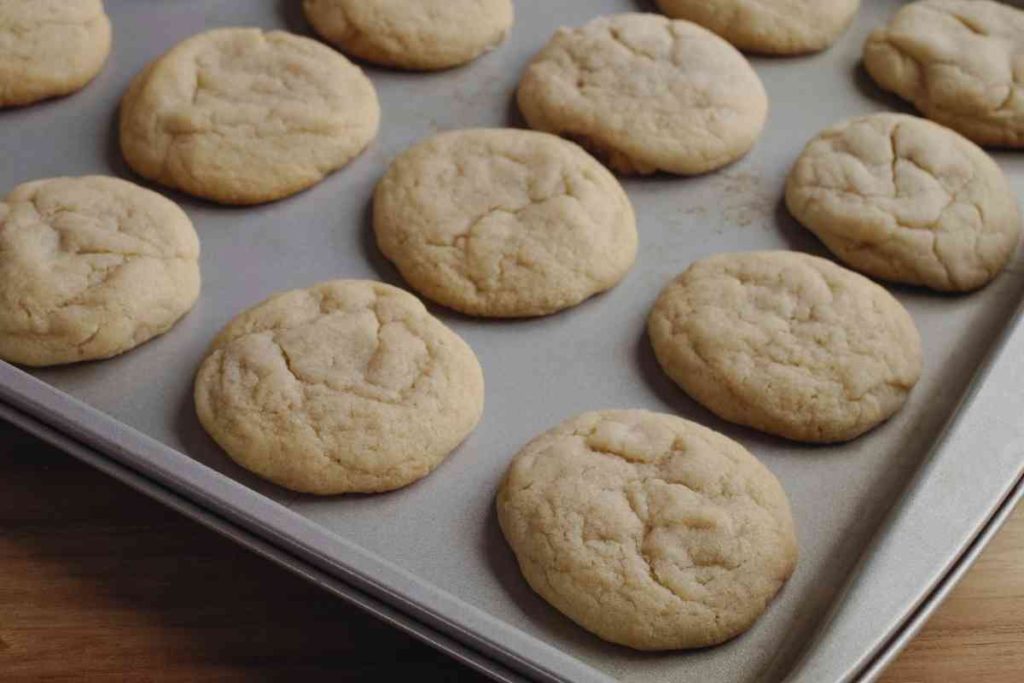
Are Cookie Sheets Necessary?
Cookie sheets, also called baking sheets, are a necessary piece of equipment for any kitchen. The most common use for the cookie sheet is, obviously enough, to bake cookies. But there are many other ways to use these versatile tools. You can also use cookie sheets for baking bread, pizza crusts, and biscuits.
Not only do they make suitable baking surfaces because they keep the heat even and give you a large surface area to work on, but they are also easy to clean. You can easily use them repeatedly without worrying about wrecking your cookies by using a dirty pan that has been washed improperly or perhaps even scratched by some careless cleaning tool. Cleaning is easy with a cookie sheet as they generally go straight in the dishwasher!
What Is the Normal Size of a Cookie Sheet?
Most cookie sheets are 18 by 13 inches, although you can also find smaller and larger sizes. The standard size is suitable for most purposes, but if you’re cooking something very small (like one large cookie or a couple of small cookies), you’ll want to use a smaller sheet. Likewise, a larger sheet will be the best option if you’re preparing food for a party and need to make extra-large batches at once.
Cookie sheets are often called baking sheets because they’re helpful for much more than just making cookies! However, it’s important to remember that regular pans are not acceptable substitutes for cookie sheets when baking cookies. You must use an actual cookie sheet, or your cookies may turn out burned on the bottom.
How Many Cookie Sheets Do You Need?
A good rule of thumb is that one or two cookie sheets will suffice for a casual baker who wants to make cookies now and then. However, if you plan on baking a lot of cookies all at once (for instance, as gifts or treats at a party), you’re going to want three or four cookie sheets so you can get through the whole batch without having to wait too long between batches.
Additionally, if you’re going to be baking a lot of cookies, even when not doing them all in one go, it might be worth investing in some cooling racks for when the baked-through cookies come off the sheet; this way, you can start another batch immediately instead of waiting for space on your countertop.
Is a Roasting Pan the Same As a Cookie Sheet?
No, roasting pans and cookie sheets are not the same things. Roasting pans have higher sides, while cookie sheets only have flat sides. A roasting pan is much deeper than a cookie sheet, which means it can hold more food. Additionally, a roasting pan has handles on the sides, making it easier to lift in and out of the oven.
What Is the Difference Between a Cookie Tray and a Baking Tray?
A baking tray is a flat, rectangular metal pan used for baking cookies, bread, or other food. A cookie tray is a type of baking tray with shallow sides and a lip explicitly designed for baking cookies.
A cookie sheet is a flat sheet made of metal; it is also called a baking sheet. A baking tray—which most chefs call an oven tray—is not the same as a baking sheet. Oven trays have high sides to keep in the juices that leak from roasts or turkeys or batter from cakes or bread. Unlike baking sheets, oven trays are usually non-stick and may be made from silicone or plastic and aluminum.
Is a Jelly Roll Pan the Same As a Cookie Sheet?
Jelly roll pans are a type of cookie sheet, but they’re not interchangeable. As their name suggests, jelly roll pans are designed to make jelly rolls. They’re also sometimes called Swiss roll pans, as you used them to create this treat.
Jelly roll sheets differ from cookie sheets in that they have a lip on all sides and are usually made of even thicker metal than standard cookie sheets. This helps keep the battery inside the pan as it rises during baking and prevents it from leaking out onto the oven floor or walls (which could cause your oven to smoke).
Are Steel Cookie Sheets Magnetic?
The steel cookie sheets are not magnetic. This is because steel is not a magnetic material. Magnets are attracted to materials that are made of iron, nickel, or cobalt. Most types of steel (like stainless steel) are non-magnetic, but some types (like carbon steel) are magnetic. The difference is in the amount of carbon inside the steel.
Can a Cookie Cooling Rack Go in the Oven?
A cooling rack can go in the oven, but you should use caution because they are not designed to withstand the high temperatures of an oven. Your cake will be delicate; if you want to bake a cake and place a cooling rack inside the pan. If you put an empty pan with only the cooling rack directly into the oven and bake it at 400 degrees Fahrenheit for 20 minutes, your cooling rack will melt.
Cooling racks are used to cool cakes after they come out of the oven or are taken off a baking sheet. When you place a cooling rack on top of a hot baking sheet or inside a hot cake pan, it absorbs heat from the surface it touches, preventing your baked goods from burning or drying out too quickly. You can also use cooling racks to make cookies, bread, pies, and more.
Fixing the Cookies
Fixing the baked cookies means making them look better. This can be done by adding frosting, sprinkles, or other decorations. You can also do it by simply making them neater.
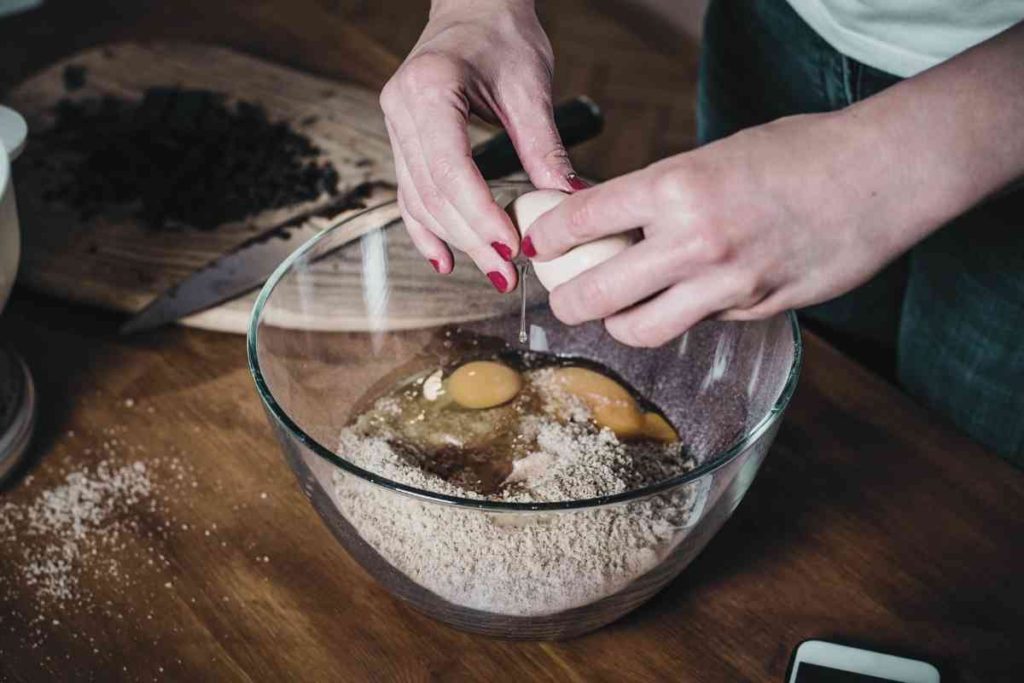
How Do You Fix Chewy Cookies?
There are a few ways to fix chewy cookies. One way is to add more flour to the dough. This will make the cookies less chewy. Another way is to bake the cookies for a shorter amount of time. This will make the cookies less chewy as well.
Will Cookies Harden As They Cool?
Yes, cookies will harden as they cool. This is because the fats in the cookie will solidify as the temperature decreases. After a few minutes of cooling, the cookies will harden as they cool. When you first take them out of the oven, they will be soft, but after a few minutes of cooling, they will harden. Also, the longer you bake them, the harder they will be.
How to Fix Underdone Cookies?
You can start by checking your oven temperature with an oven thermometer, and they’re usually pretty cheap and worth having if you do a lot of baking.
If your cookies are still underdone in the middle, you can try one of two things:
You can bake them for a little longer at the same temperature to let them finish cooking. This will also help the cookies to be brown more around the edges/bottom. They might just need a few extra minutes in the oven to finish baking (and remember that even when they come out of the oven, they’ll continue cooking from residual heat for several minutes).
Another option is to turn down the temperature slightly and bake them for longer (this will be useful if your cookies are burning before they have time to set inside). This helps prevent the outsides from getting overdone while allowing the insides time to cook all the way through. There’s no harm in doing this – bread baked at lower temperatures is often better than bread baked quickly at high heat.
How Do You Fix Over-baked Cookies?
If your cookies are over-baked or dry, you can try reheating them. Place the cookies on a baking sheet and bake them at a low temperature for a few minutes. This will help to soften them up. If they are still not soft enough, you can try adding a little bit of milk to them.
What Temperature to Bake Cookies in an Oven?
The temperature to bake cookies in an oven is 350 degrees Fahrenheit. This is the standard temperature for baking cookies and will result in the cookies being cooked through and having a lightly browned exterior.
Are Underdone Cookies Safe to Eat?
Yes, it is safe to eat underdone cookies, although the texture of your cookies will be different than you would typically expect. The first few times I undercooked my cookies, I found that they got hard within minutes, enough to cut the roof of my mouth and make eating them painful. Since then, I’ve had a different experience baking with browned butter.
The key is adding a raw egg to melted butter before mixing flour and sugar. These ingredients take on a new texture when cooked at low temperatures, making them chewy instead of crunchy.
Conclusion
Cookies are a staple of the holiday season, and many people bake them every year for their loved ones. While it’s not necessary to have a baking tray for every cookie recipe you want to make, you need to know the differences between a cookie tray and a baking tray so you can choose the right one for your needs.

![Are Casserole Dishes Flameproof? [What You Need To Know]](https://orbitkitchen.com/wp-content/uploads/2021/09/Are-Casserole-Dishes-Flameproof-768x509.jpg)
![Do Cake Pops Go Bad? [Here’s the Truth]](https://orbitkitchen.com/wp-content/uploads/2022/05/Do-Cake-Pops-Go-Bad-768x512.jpg)

